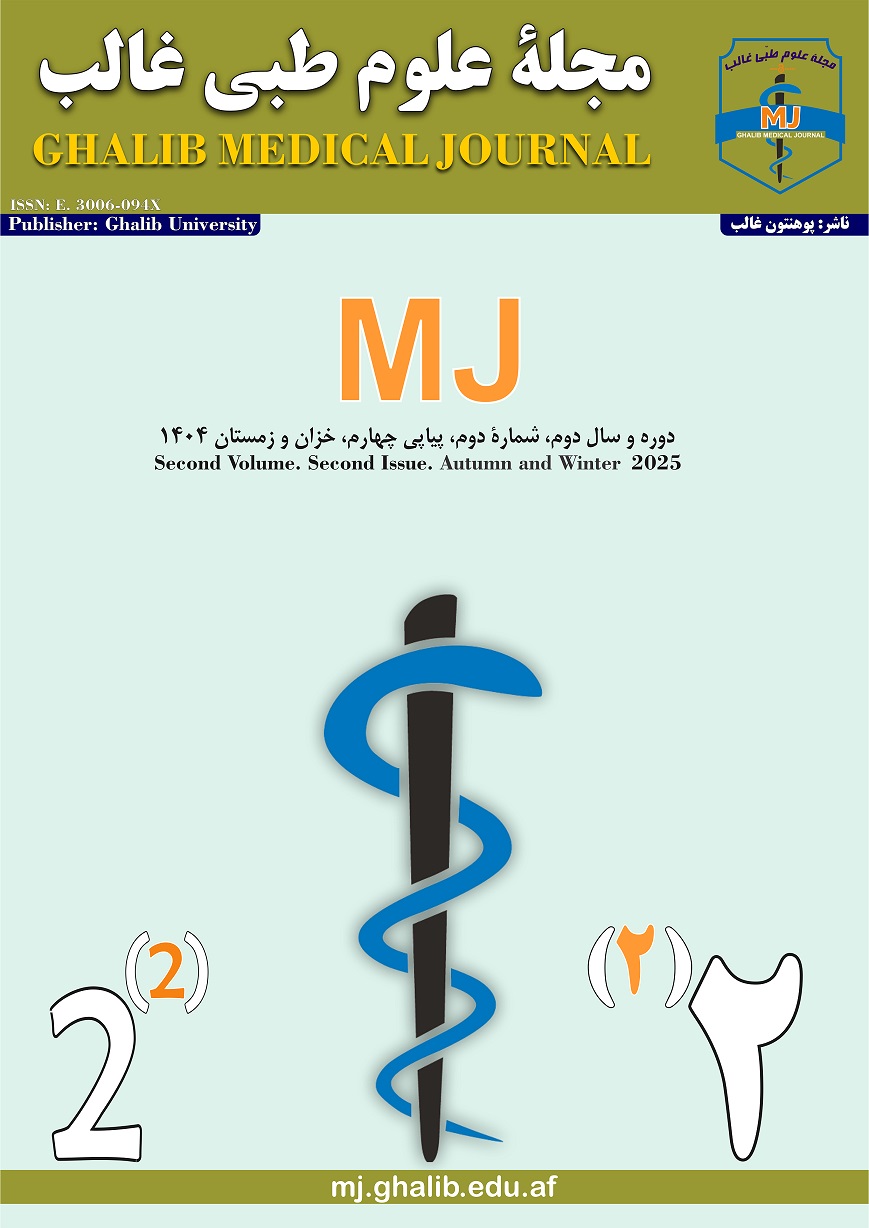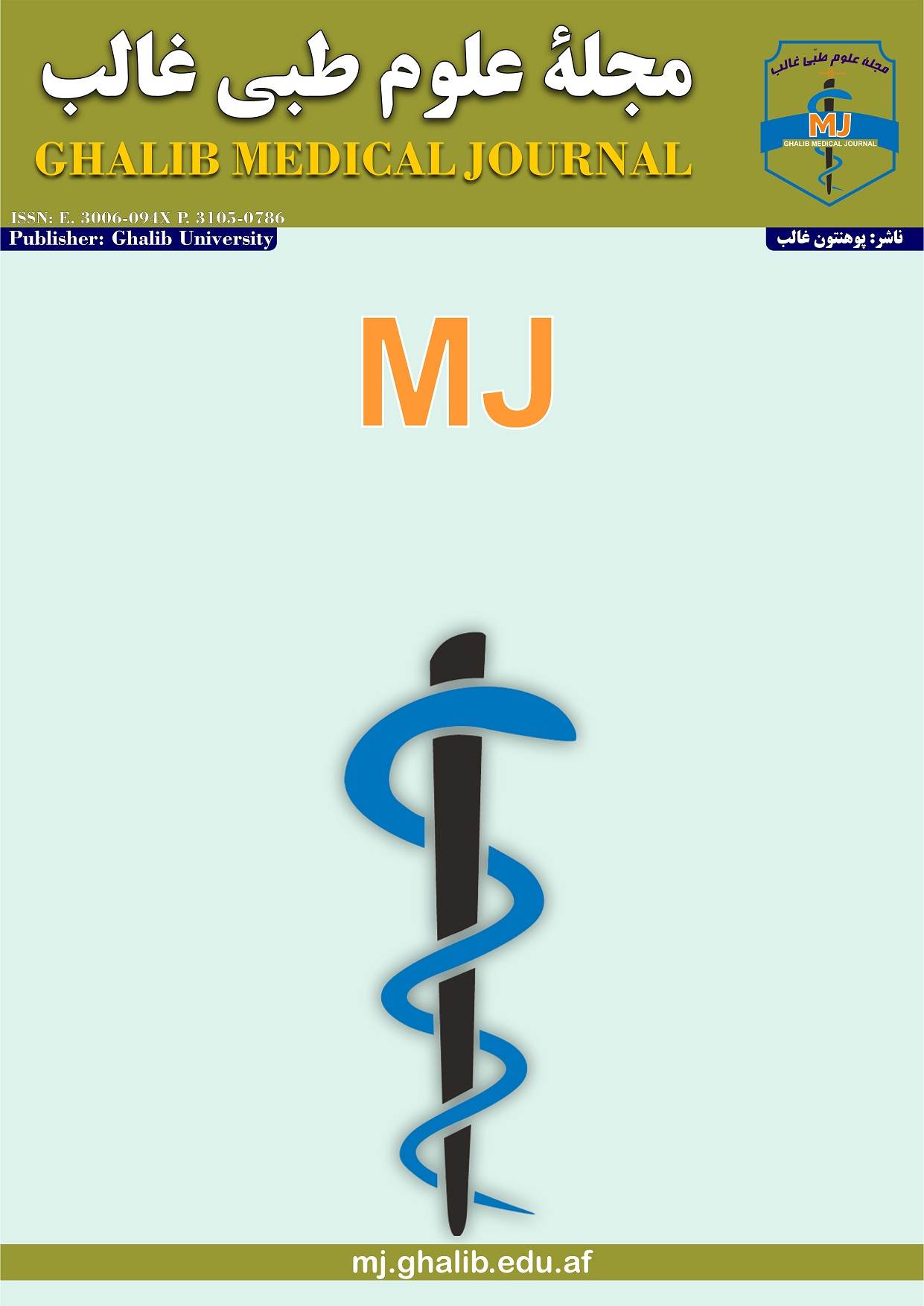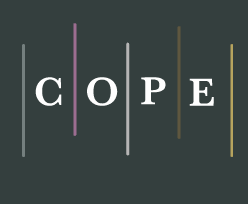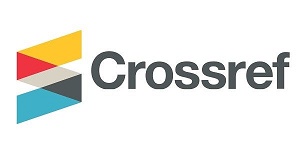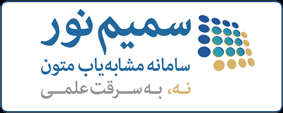بررسی نقش انواع زخمپوشهای نوین در تسریع ترمیم زخم و بازسازی انساج
DOI::
https://doi.org/10.58342/ghalibMj.V.2.I.2.9واژهگانِ کلیدی:
زخمپوش هایدروژلی، ترمیم زخم، پوست، بازسازی بافت، فیبروبلاست، فاکتورهای رشدچکیده
زمینه و هدف: پوست بزرگترین عضو بدن و نخستین سد دفاعی در برابر عوامل خارجی است که آسیب به آن میتواند مشکلات جدی سلامتی ایجاد کند. فرایند ترمیم زخم پیچیده و چندمرحلهای بوده و استفاده از زخمپوشهای مناسب برای تسریع بهبود و جلوگیری از عفونت اهمیت زیادی دارد. هدف این مطالعه، دستهبندی زخمپوشها بر پایه پلیمرهای طبیعی و بررسی نقش هر نوع زخمپوش در فرایند ترمیم زخم میباشد.
روش بررسی: روش تحقیق به کار رفته در این مطالعه، مرور سیستماتیک بود که با استفاده از کلمات کلیدی زیر پرداختیم: زخمپوش هایدروژلی، ترمیم زخم، پوست، بازسازی بافت، فیبروبلاست، فاکتورهای رشد. این جستجو در دو پایگاه داده آنلاین انجام شد: Google Scholar و PubMed. به منظور اطمینان از دقت و جامعیت، مقالات شناسایی شده در PubMed و Google Scholar مورد بررسی قرار گرفتند. پس از حذف مقالات تکراری، انجام غربالگری عنوان، و ارزیابی متن کامل، در نهایت مجموعاً 37 مقاله که معیارهای ورود و خروج را برآورده میکردند، در این مطالعه گنجانده شدند.
یافتهها: پانسمانهای اسفنجی با ساختارهای متخلخل و ظرفیت بالای جذب ترشحات، برای زخمهایی با ترشحات سنگین مناسب میباشند. پانسمانهای فیلمی، به زخمهایی با ترشحات کم اعمال میشوند و به عنوان پوششهای حفاظتی عمل میکنند. پانسمانهای فومی به دلیل ظرفیت بالای جذب و خواص حفاظتی و حرارتی خود، برای زخمهایی با ترشحات متوسط تا زیاد مؤثر هستند. پانسمانهای هیدروکلوئید به کنترل عفونت کمک میکنند با ایجاد محیط مرطوب و کاهش pH. پانسمانهای هیدروژل، با توانایی بالای جذب، انتقال سلولهای بنیادی و بارگذاری نانو، پیشرفتهای قابل توجهی در بهبود زخمهای مزمن و نکروتیک نشان دادهاند.
نتیجهگیری: انتخاب زخمپوش باید بر اساس نوع و شرایط زخم صورت گیرد. زخمپوشهای هایدروژلی به دلیل زیستسازگاری بالا و خواص درمانی، گزینه مؤثری برای تسریع روند بهبود زخم و کاهش عوارض آن به شمار میروند.
مراجع
Roosterman D, Goerge T, Schneider SW, Bunnett NW, Steinhoff M. Neuronal control of skin function: the skin as a neuroimmunoendocrine organ. Physiological reviews. 2006;86(4):1309-79. https://doi.org/10.1016/S0142-9612(01)00399-4
Chung TW, Yang J, Akaike T, Cho KY, Nah JW, Kim SI, et al. Preparation of alginate/galactosylated chitosan scaffold for hepatocyte attachment. Biomaterials. 2002;23(14):2827-34. https://doi.org/10.1016/S0142-9612(01)00399-4
Yagi M, Yonei Y. Glycative stress and anti-aging: 7. Glycative stress and skin aging. Glycative Stress Res. 2018;5(1):50-4. https://doi.org/10.24659/gsr.5.1_50
Strecker-McGraw MK, Jones TR, Baer DG. Soft tissue wounds and principles of healing. Emergency medicine clinics of North America. 2007;25(1):1-22. https://doi.org/10.1016/j.emc.2006.12.002
Karri VVSR, Kuppusamy G, Talluri SV, Mannemala SS, Kollipara R, Wadhwani AD, et al. Curcumin loaded chitosan nanoparticles impregnated into collagen-alginate scaffolds for diabetic wound healing. International journal of biological macromolecules. 2016;93:1519-29. https://doi.org/10.1016/j.ijbiomac.2016.05.038
Dornberger L, Montagna P, Ainsworth C. Simulating oil-driven abundance changes in benthic marine invertebrates using an ecosystem model. Environmental Pollution. 2023;316:120450. https://doi.org/10.1016/j.envpol.2022.120450
Hedayatnazari A, Movahedi M, Naseri M. Fabrication And Characterization Of Bilayer Wound Dressing Polyurethane-Gelatin/Polycaprolactone For Usage In Tissue Engineering. 2021. Hedayatnazari, A., MOVAHEDI, M., & NASERI, M.. (2021). https://sid.ir/paper/695092/en
Wickett RR, Visscher MO. Structure and function of the epidermal barrier. American journal of infection control. 2006;34(10):S98-S110. https://doi.org/10.1016/j.ajic.2006.05.295
Arda O, Göksügür N, Tüzün Y. Basic histological structure and functions of facial skin. Clinics in dermatology. 2014;32(1):3-13. https://doi.org/10.1016/j.clindermatol.2013.05.021
McLafferty E, Farley A, Hendry C. Prevention of hypothermia. Nursing Older People. 2009;21(4). 10.7748/nop2009.05.21.4.34.c7018 https://doi.org/10.7748/nop2009.05.21.4.34.c7018
McLafferty E, Hendry C, Farley A. The integumentary system: anatomy, physiology and function of skin. Nursing Standard (through 2013). 2012;27(3):35. https://doi.org/10.7748/ns2012.10.27.7.35.c9358
Chuong C-M, Nickoloff B, Elias P, Goldsmith L, Macher E, Maderson P, et al. What is the'true'function of skin? Experimental dermatology. 2002;11(2):159-87. https://www.researchgate.net/publication/292761738
Perper M, Eber A, Lindsey SF, Nouri K. Blinded, Randomized, Controlled Trial Evaluating the Effects of Light-Emitting Diode Photomodulation on Lower Extremity Wounds Left to Heal by Secondary Intention. Dermatologic surgery. 2020;46(5):605-11. https://doi.org/10.1097/DSS.0000000000002195
Vachhrajani V, Khakhkhar P. Science of Wound Healing and Dressing Materials: Springer; 2020. https://doi.org/10.1007/978-981-32-9236-9
Schreml S, Szeimies R, Prantl L, Karrer S, Landthaler M, Babilas P. Oxygen in acute and chronic wound healing. British Journal of Dermatology. 2010;163(2):257-68. https://doi.org/10.1111/j.1365-2133.2010.09804.x
Boateng JS, Matthews KH, Stevens HN, Eccleston GM. Wound healing dressings and drug delivery systems: a review. Journal of pharmaceutical sciences. 2008;97(8):2892-923. https://doi.org/10.1002/jps.21210
Bowers S, Franco E. Chronic wounds: evaluation and management. American family physician. 2020;101(3):159-66. https://pubmed.ncbi.nlm.nih.gov/32003952/
Zahedi P, Rezaeian I, Ranaei‐Siadat SO, Jafari SH, Supaphol P. A review on wound dressings with an emphasis on electrospun nanofibrous polymeric bandages. Polymers for Advanced Technologies. 2010;21(2):77-95. https://doi.org/10.1002/pat.1625
Prasathkumar M, Sadhasivam S. Chitosan/Hyaluronic acid/Alginate and an assorted polymers loaded with honey, plant, and marine compounds for progressive wound healing—Know-how. International Journal of Biological Macromolecules. 2021;186:656-85. https://doi.org/10.1016/j.ijbiomac.2021.07.067
Qing C. The molecular biology in wound healing & non-healing wound. Chinese Journal of Traumatology. 2017;20(4):189-93. https://doi.org/10.1016/j.cjtee.2017.06.001
Lorenz HP, Longaker MT. Wounds: biology, pathology, and management. Essential practice of surgery: Springer; 2003. p. 77-88. https://doi.org/10.1007/978-3-642-57282-112
Wang P. H, Huang B‐S, Horng H‐C, Yeh C‐C, Chen Y‐J. Wound healing. J Chin Med Assoc. 2018;2(81):94-101.
Zhang M, Zhao X. Alginate hydrogel dressings for advanced wound management. International Journal of Biological Macromolecules. 2020;162:1414-28. https://doi.org/10.1016/j.ijbiomac.2020.07.311
Gonzalez ACdO, Costa TF, Andrade ZdA, Medrado ARAP. Wound healing-A literature review. Anais brasileiros de dermatologia. 2016;91:614-20. https://doi.org/10.1590/abd1806-4841.20164741
Teller P, White TK. The physiology of wound healing: injury through maturation. Perioperative Nursing Clinics. 2011;6(2):159-70. https://doi.org/10.1016/j.suc.2009.03.006
Cho CY, Lo JS. Dressing the part. Dermatologic clinics. 1998;16(1):25-47. https://doi.org/10.1016/S0733-8635(05)70485-X
Kim HY, Kim HN, Lee SJ, Song JE, Kwon SY, Chung JW, et al. Effect of pore sizes of PLGA scaffolds on mechanical properties and cell behaviour for nucleus pulposus regeneration in vivo. Journal of tissue engineering and regenerative medicine. 2017;11(1):44-57. https://doi.org/10.1002/term.1856
Chopra H, Kumar S, Singh I. Strategies and Therapies for Wound Healing: A Review. Current Drug Targets. 2022;23(1):87-98. https://doi.org/10.2174/1389450122666210415101218
Koosha M. Modern commercial wound dressings and introducing new wound dressings for wound healing: A review. Basparesh. 2017;6(4):65-80. https://doi.org/10.20935/AcadOnco7757
Ma R, Wang Y, Qi H, Shi C, Wei G, Xiao L, et al. Nanocomposite sponges of sodium alginate/graphene oxide/polyvinyl alcohol as potential wound dressing: In vitro and in vivo evaluation. Composites Part B: Engineering. 2019;167:396-405. https://doi.org/10.1016/j.compositesb.2019.03.006
Gan J-E, Chin C-Y. Formulation and characterisation of alginate hydrocolloid film dressing loaded with gallic acid for potential chronic wound healing. F1000Research. 2021;10. https://doi.org/10.12688/f1000research.52528.1
Moura LI, Dias AM, Carvalho E, de Sousa HC. Recent advances on the development of wound dressings for diabetic foot ulcer treatment—A review. Acta biomaterialia. 2013;9(7):7093-114. https://doi.org/10.1016/j.actbio.2013.03.033
Queen D, Orsted H, Sanada H, Sussman G. A dressing history. International wound journal. 2004;1(1):59-77. https://doi.org/10.1111/j.1742-4801.2004.0009.x
Lanel B, Barthes-Biesel D, Regnier C, Chauve T. Swelling of hydrocolloid dressings. Biorheology. 1997;34(2):139-53. https://doi.org/10.1016/S0006-355X(97)00010-3
Kong D, Zhang Q, You J, Cheng Y, Hong C, Chen Z, et al. Adhesion loss mechanism based on carboxymethyl cellulose-filled hydrocolloid dressings in physiological wounds environment. Carbohydrate polymers. 2020;235:115953. https://doi.org/10.1016/j.carbpol.2020.115953
Geizhals S, Lauren CT, Lipner SR. Hydrocolloid dressing application for the treatment of pediatric onychodystrophies. Journal of the American Academy of Dermatology. 2019;80(5):e103-e4. https://doi.org/10.1016/j.jaad.2018.10.009
Li M, Liang Y, He J, Zhang H, Guo B. Two-pronged strategy of biomechanically active and biochemically multifunctional hydrogel wound dressing to accelerate wound closure and wound healing. Chemistry of Materials. 2020;32(23):9937-53. https://pubs.acs.org/doi/10.1021/acs.chemmater.0c02823.
چاپ شده
ارجاع به مقاله
شماره
نوع مقاله
مجوز
حق نشر 2025 علی شیر حیدری, غلام یحیی امیری

این پروژه تحت مجوز بین المللی Creative Commons Attribution 4.0 می باشد.
